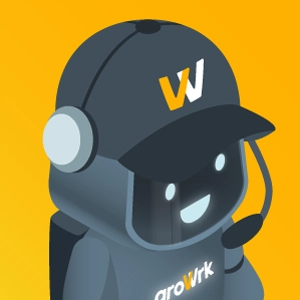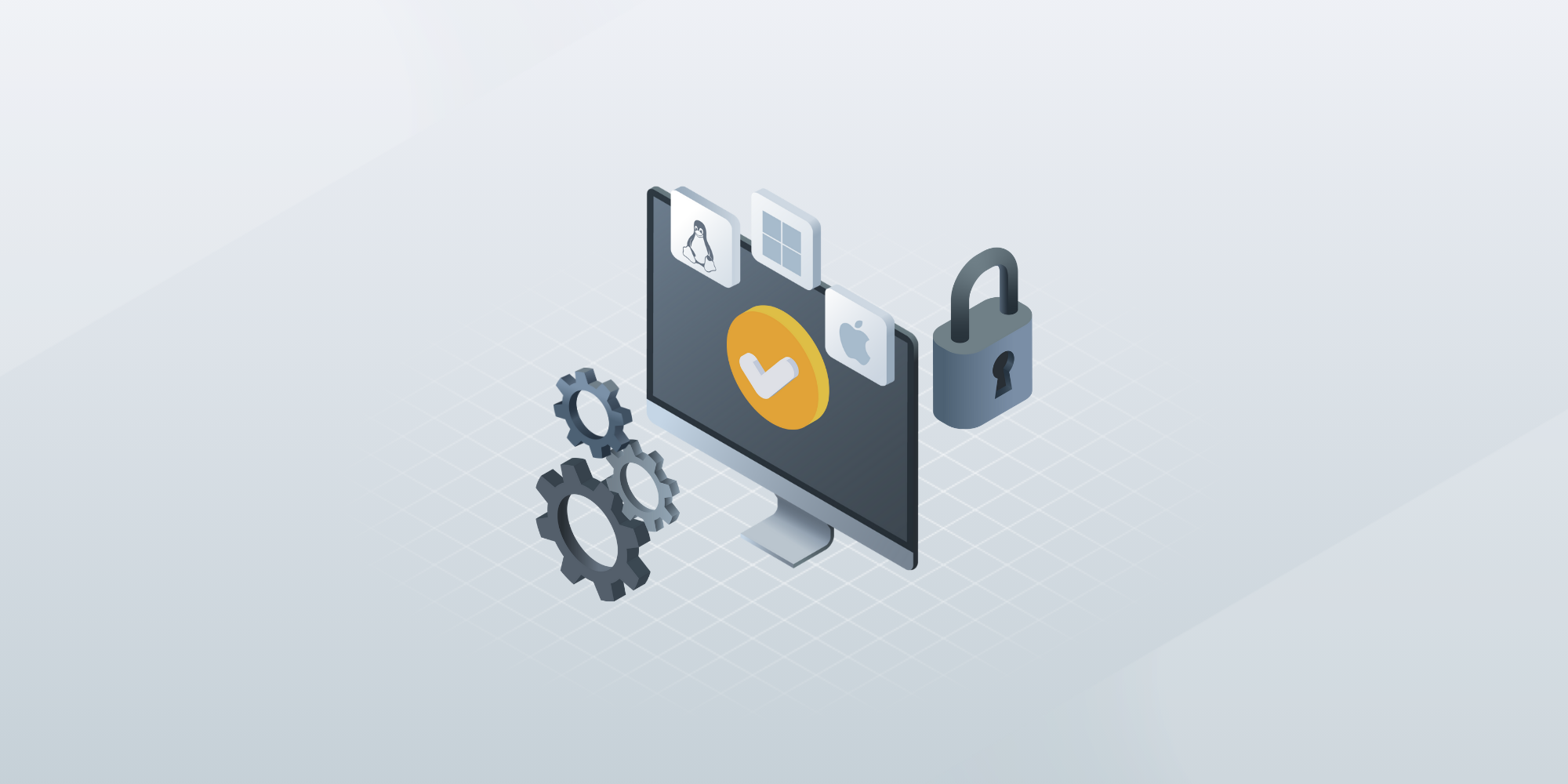How to create a procurement plan: Step-by-step instructions
 GroWrk Team
GroWrk Team
A procurement plan outlines the steps to obtain project materials and services, often from an external supplier. It helps teams align purchasing activities with business objectives, manage vendor relationships, and control risks.
According to McKinsey, external spending makes up between 50% and 80% of a company’s total cost base—meaning even minor improvements in procurement strategy can drive significant savings.
Key takeaways
-
Set clear procurement objectives and responsibilities to align sourcing with business goals, ensure accountability, and maintain operational oversight.
-
Use vendor selection criteria and market research to secure reliable, cost-effective suppliers while meeting compliance and quality standards.
-
Implement procurement software to automate workflows, manage vendor performance, and ensure organization-wide compliance throughout the procurement lifecycle.
What is a procurement plan?

A procurement plan outlines how an organization will source the goods and services required to complete a project. It defines what needs to be procured when needed, how much it will cost, and who is responsible for each part of the process. This planning helps teams manage costs and minimize risks for timely delivery.
An effective procurement plan allows organizations to:
- Understand and define procurement requirements early
- Select qualified vendors and negotiate favorable terms
- Align sourcing strategies with long-term business goals
- Anticipate demand and prepare for peak operational periods
Procurement planning also supports transparency and collaboration. Involving stakeholders early helps navigate project constraints and set performance expectations to create a more resilient supply strategy. Demand forecasting during this phase ensures sufficient stock for continuity, which is critical in IT procurement, where delays can stall operations.
Key components of procurement planning

A procurement management plan outlines the foundational elements required to guide sourcing activities, manage risks, and ensure procurement aligns with organizational goals. A strong plan typically includes:
- Procurement objectives and success metrics
- Clear roles and responsibilities
- Risk assessment and mitigation strategies
- External supplier engagement criteria
Procurement objectives and goals
Procurement objectives connect sourcing activities to broader business goals. These objectives help teams:
- Define project-specific requirements
- Measure performance against operational targets
- Drive cost efficiency and timely delivery
Roles and responsibilities
Defined responsibilities within the procurement team create accountability and smooth execution. Common roles include:
- Project managers: Oversee procurement timelines and ensure integration with overall project planning
- Procurement specialists: Manage supplier selection, purchasing, and contract terms
- Technical managers: Ensure purchased goods meet operational and technical standards
Risk assessment and mitigation strategies
Procurement risks such as late deliveries, supply shortages, or non-compliance—can impact project timelines and costs. A comprehensive risk management plan should:
- Identify internal and external procurement risks
- Assess impact severity and likelihood
- Define mitigation actions and contingency plans
Developing a procurement strategy: Where to start?

A procurement strategy is an operational blueprint that guides how an organization acquires goods and services. It ensures procurement decisions align with business goals to optimize costs and support long-term supplier relationships.
An effective strategy includes:
- Clear cost and value creation goals
- External supplier analysis
- Defined procurement methods and evaluation criteria
- Market research and stakeholder input
Conducting market research
Market research helps organizations assess supplier capabilities, understand pricing trends, and evaluate sourcing risks. This process should include:
- Benchmarking supplier performance
- Reviewing pricing across regions or vendors
- Analyzing market trends that could impact availability or cost
Vendor selection criteria
Setting vendor selection criteria in advance ensures a structured and objective evaluation process. Consider assessing vendors on:
- Quality standards and certifications
- Pricing transparency and contract terms
- Delivery timelines and past performance
- Compliance with procurement or industry regulations
Choosing the Right Procurement Method
The right procurement method balances speed, cost, and risk. Common methods include:
- Competitive bidding for price transparency
- Direct sourcing for speed and simplicity
- Framework agreements for recurring purchases
Crafting the procurement process
Developing a clear and structured procurement process is essential for executing your procurement strategy effectively. From defining requirements to closing contracts, each step must be meticulously planned for consistency, compliance, and timely delivery.
Outlining the procurement process in 8 steps
A well-structured procurement process ensures every purchase follows a repeatable, compliant path. The typical sequence includes:
- Define requirements: Identify materials, services, and specifications
- Conduct market research: Assess vendors and market conditions
- Issue RFQs or RFPs: Solicit proposals based on project needs
- Evaluate vendors: Use predefined selection criteria
- Negotiate and award contracts: Finalize pricing and terms
- Approve contracts: Route through internal compliance processes
- Monitor fulfillment: Track deliveries and vendor performance
- Close contracts: Confirm deliverables and process final payments
Creating a procurement schedule
A procurement schedule aligns procurement activities with the overall project timeline. It should account for:
- Start and end dates for each sourcing phase
- Review and approval of timeframes
- Holidays or known delays that may impact delivery
- Vendor lead times and milestone expectations
Managing vendor relationships
Effective vendor management goes beyond selection—it’s about long-term performance and accountability. Best practices include:
- Tracking vendor obligations: Use software to monitor KPIs and delivery accuracy
- Maintaining communication: Schedule regular check-ins and updates
- Implementing cost sanctions or incentives: Reward reliability and flag underperformance
- Reviewing contracts regularly: Ensure terms remain aligned with current needs
Budgeting and cost management

A procurement budget protects a project from financial disruptions by defining spending limits and aligning purchases with available resources. Strong cost management ensures procurement activities stay on track and deliver value throughout the project lifecycle.
Effective budgeting requires collaboration between procurement, accounting, and operations teams. Regular reviews and historical spend analysis help teams forecast future needs and spot cost-saving opportunities.
Determining procurement costs
Procurement costs include more than just the purchase price. Teams should define negotiable vs. fixed costs during the contract stage to manage financial risk and avoid surprise expenses. To build a realistic budget, teams should account for:
- Product or service unit price
- Shipping and handling fees
- Taxes and import duties
- Installation or configuration services
- Ongoing maintenance costs (if applicable)
Budget Approval Process
A structured budget approval process ensures alignment with project requirements and organizational constraints. Key steps include:
- Initial budget draft: Based on scope and vendor estimates
- Cross-functional review: Accounting, operations, and procurement collaborate to refine the budget
- Incorporate risk buffers: Account for variables like supply chain delays or currency fluctuations
- Final approval: The budget is validated by the project manager or finance lead
Contract management in procurement
Contract management is a core component of any procurement framework. It formalizes vendor relationships, defines deliverables, and protects the organization from legal or financial risk. The process begins with vendor selection and ends with a signed agreement that governs service delivery, cost, and compliance.
Types of contracts
Choosing the right contract type is essential for aligning cost control with project needs. Common types include:
- Fixed price contracts: Predefined cost for a specific deliverable. Ideal for predictable scope and outcomes.
- Time and Materials (T&M) contracts: Based on hourly rates and materials used. Useful for flexible or evolving projects.
- Cost reimbursement contracts: The vendor is reimbursed for costs plus a fee. Suitable for R&D or government work with undefined scope.
Negotiating contracts
Contract negotiation is where procurement terms become enforceable. Best practices include:
- Always formalize agreements in writing—verbal deals expose teams to risk
- Define pricing, scope, milestones, penalties, and renewal clauses
- Seek legal or procurement counsel to evaluate risk language and warranty protections
- Ensure both parties understand performance standards and escalation paths
Monitoring compliance
Ongoing compliance monitoring ensures that vendors meet their contractual obligations. This step helps protect procurement integrity and prevents costly lapses. Key activities include:
- Performance tracking: Compare delivery timelines, quality, and SLAs against contract terms
- Audit readiness: Maintain records of communications, changes, and approvals
- Non-compliance response: Enforce penalties or renegotiate based on performance
- Software use: Contract lifecycle management tools can automate alerts, renewal tracking, and risk flagging
Examples of procurement software
Procurement software is critical in streamlining purchasing, improving vendor oversight, and reducing operational costs. These tools increase efficiency across procurement lifecycle management by automating routine tasks and centralizing procurement data.
Organizations that adopt modern procurement platforms benefit from:
- Faster approvals and payment cycles
- Enhanced visibility into spend and supplier performance
- Improved compliance and audit readiness
- Scalable processes for growing or distributed teams
ERP systems
Enterprise Resource Planning (ERP) systems integrate procurement with broader business functions like finance, inventory, and supply chain management. They help teams:
- Automate purchase orders and approvals
- Access real-time budget and inventory data
- Align procurement with accounting and production schedules
- Improve data accuracy and decision-making across departments
Procurement management software
Dedicated procurement management tools offer more targeted sourcing, contracting, and vendor management features. These solutions—often delivered as cloud-based SaaS platforms—help organizations:
- Communicate efficiently with vendors
- Track and manage expenses in real time
- Automate purchase requests, approvals, and invoice matching
- Monitor vendor performance against SLAs
These tools are ideal for companies looking to scale their procurement operations without overhauling entire systems. Many integrate directly with ERPs for seamless data flow.
Implementing and monitoring the procurement plan
Executing a procurement plan successfully requires detailed coordination, active vendor management, and continuous oversight. From contract administration to vendor communication, each implementation stage must align with project goals, budget, and compliance requirements.
Regular review and optimization of the plan ensures it remains relevant and cost-effective to align with evolving business needs.
5 implementation steps
A structured implementation process ensures procurement activities are executed as planned. These steps are:
- Set roles and responsibilities: Ensure all stakeholders know their duties
- Use project planning tools: Track tasks, timelines, and approvals
- Initiate vendor communication: Confirm requirements and delivery schedules
- Finalize contracts and terms: Align agreements with project scope and budget
- Monitor delivery milestones: Track fulfillment and handle exceptions
Performance evaluation
Measuring procurement performance is essential for identifying gaps, optimizing costs, and ensuring continuous improvement. Key performance indicators (KPIs) may include:
- On-time delivery rate
- Cost variance vs. budget
- Contract compliance rate
- Vendor performance scores
- Cycle time from request to delivery
Why GroWrk is your ideal partner for IT procurement

If you want to streamline procurement, cut device costs, and scale operations globally, GroWrk offers a procurement platform built for modern, distributed teams. From planning to deployment and asset retrieval, GroWrk simplifies every step.
Here’s how GroWrk can support your procurement strategy:
- Global reach: Operates in over 150 countries, procuring, deploying, retrieving, and disposing equipment from one centralized platform.
- End-to-end IT asset management: Manage every stage of the IT asset lifecycle—from procurement to decommissioning—with built-in tools for compliance, auditing, and vendor oversight.
- Real-time visibility and control: Track order status, inventory levels, and costs across locations with dynamic dashboards and custom reporting.
- AI-powered support: GroWrk’s real-time chatbot offers instant assistance to IT teams, reducing downtime and improving employee onboarding experiences.
- Advanced security: Includes mobile device management, remote control, and identity verification tools to maintain asset integrity and compliance.
- Transparent pricing: No hidden fees or complex contracts—just scalable pricing that fits your growth plans.
- Procurement automation: Automate device ordering, approvals, and shipment workflows, freeing your teams from repetitive manual tasks.
Want a better way to manage procurement across your global workforce? Book a demo with GroWrk today and see how smarter procurement can help your business save costs.
Frequently Asked Questions
What is procurement planning, and why is it important?
Procurement planning is important as it is a comprehensive framework for buying goods and services, allows teams to understand their requirements, mitigate risks and manage costs for project success. This structured approach ensures timely delivery and resource optimization.
What are the key components of a procurement plan?
A procurement plan must include procurement objectives and goals, clear roles and responsibilities, risk assessment with mitigation strategies and procurement strategy. These are the building blocks for effective procurement management.
How do you determine procurement costs?
Procurement costs calculation requires examination of direct costs including purchase price, shipping costs and taxes and installation service costs. Knowledge of item prices combined with defined deliverable budgets helps to create procurement budgets.
What is the role of ERP systems in procurement?
Procurement benefits from ERP systems that deliver automated processes and accurate information access and real-time data to support better decisions and visibility. The process delivers efficiency in procurement.
Why is performance evaluation important in procurement?
Performance evaluation is important as it measures how well the procurement plan is working through goods receipt time and cost impact. The process allows organizations to make strategic changes to align with project objectives.






